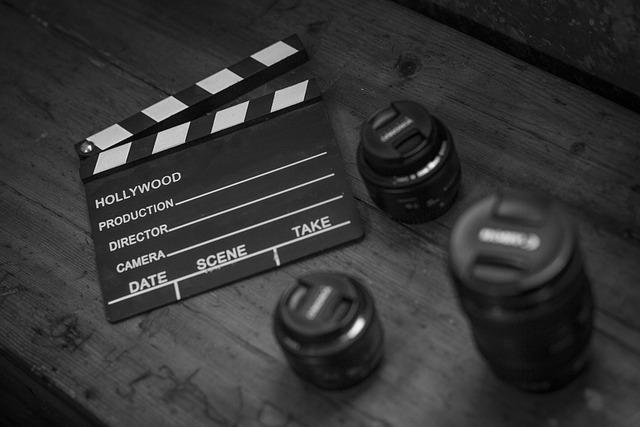In the world of filmmaking, where creativity and precision dance in a delicate balance, a perennial question emerges: should filmmakers adhere strictly to the original script, or should they allow the spontaneous magic of improvisation to unfold? This debate, echoing through the corridors of Hollywood and independent sets alike, touches the very essence of storytelling. Is the script a sacred text, meticulously crafted to convey a precise vision, or is it a mere blueprint, inviting actors and directors to infuse their own interpretations? As cameras roll and directors call action, the tension between structure and spontaneity shapes the cinematic experience, inviting us to explore the boundaries of artistic expression. Join us as we delve into this intriguing dialogue, examining the merits and challenges of both approaches in the ever-evolving art of filmmaking.
Balancing Script Fidelity with Creative Freedom
In the world of filmmaking, the script serves as a blueprint, guiding the narrative and shaping the characters. However, the journey from script to screen often demands a delicate balance between adhering to the written word and embracing spontaneous creativity. Script fidelity ensures the original vision is preserved, maintaining the writer’s intent and the story’s core essence. Yet, creative freedom can infuse a film with unexpected vitality, allowing actors to explore their characters in more depth and directors to experiment with novel interpretations.
- Enhanced Authenticity: Improvisation can lead to more genuine performances, capturing the raw emotions that scripted lines might miss.
- Innovative Storytelling: Allowing room for spontaneity can result in unique plot developments and unforeseen twists.
- Dynamic Chemistry: Actors often develop a stronger on-screen rapport when given the freedom to play off each other in unscripted moments.
While some filmmakers champion strict adherence to the script, others find that a flexible approach can lead to cinematic magic. The key lies in knowing when to remain faithful to the script and when to embrace the unexpected.

Exploring the Impact of Improvisation on Storytelling
Improvisation can breathe new life into a film, offering a fresh perspective that can enhance the narrative’s authenticity. By allowing actors the freedom to explore their characters beyond the confines of the script, filmmakers might discover unexpected moments of magic. These spontaneous interactions can lead to more genuine dialogue and dynamic character development, enriching the story in ways that a meticulously crafted script might not anticipate.
- Enhanced Authenticity: Improvised scenes often resonate more deeply with audiences, as they capture raw, unfiltered emotions.
- Dynamic Character Development: Actors have the opportunity to explore and expand their roles, adding layers to their characters.
- Unexpected Creativity: New and unique elements can emerge, offering a fresh take on the narrative.
However, this creative freedom comes with its own set of challenges. Maintaining the story’s core message while allowing room for improvisation requires a delicate balance. The key lies in collaboration, where directors and actors work hand-in-hand to ensure that any spontaneous additions align with the overall vision of the film.

Case Studies: Successes and Pitfalls of Deviating from the Script
Exploring the realm of filmmaking reveals fascinating case studies where directors either adhered strictly to scripts or ventured into the world of improvisation. Successes often highlight the magic that occurs when actors are given freedom. For instance, in The Dark Knight, Heath Ledger’s unscripted actions as the Joker, like his unsettling clapping in the jail scene, became iconic moments. Similarly, Good Will Hunting features Robin Williams’ improvised lines, adding depth and authenticity that resonated deeply with audiences.
However, pitfalls are equally instructive. Films like Justice League faced challenges when deviations led to inconsistent tones, muddling the story. In Suicide Squad, extensive improvisation contributed to a disjointed narrative, leaving audiences confused. The balance lies in knowing when to embrace spontaneity and when to follow the script, ensuring the story remains cohesive while allowing creativity to flourish.
- Successes: Heath Ledger in The Dark Knight, Robin Williams in Good Will Hunting
- Pitfalls: Justice League, Suicide Squad

Guidelines for Filmmakers: When to Embrace Improvisation
Filmmakers often face the dilemma of whether to stick to the original script or allow actors the freedom to improvise. Embracing improvisation can infuse a film with authenticity and spontaneity, capturing moments that scripted dialogue might miss. However, knowing when to veer off the script is crucial. Here are some guidelines to consider:
- Character-Driven Scenes: If a scene heavily relies on the depth and complexity of a character, allowing the actor to explore their role through improvisation can lead to more genuine performances.
- Comedic Elements: Comedy often benefits from the unpredictable nature of improv. Encourage actors to experiment with timing and delivery to enhance the humor.
- Emotional High Points: During emotionally charged scenes, a bit of improvisation can bring raw, unfiltered emotion that scripted lines may not convey.
While improvisation can enrich a film, it should be balanced with the director’s vision. Consider the project’s goals and the actors’ comfort levels to determine when to embrace this creative tool.

